Nutrition Facts
0 servings
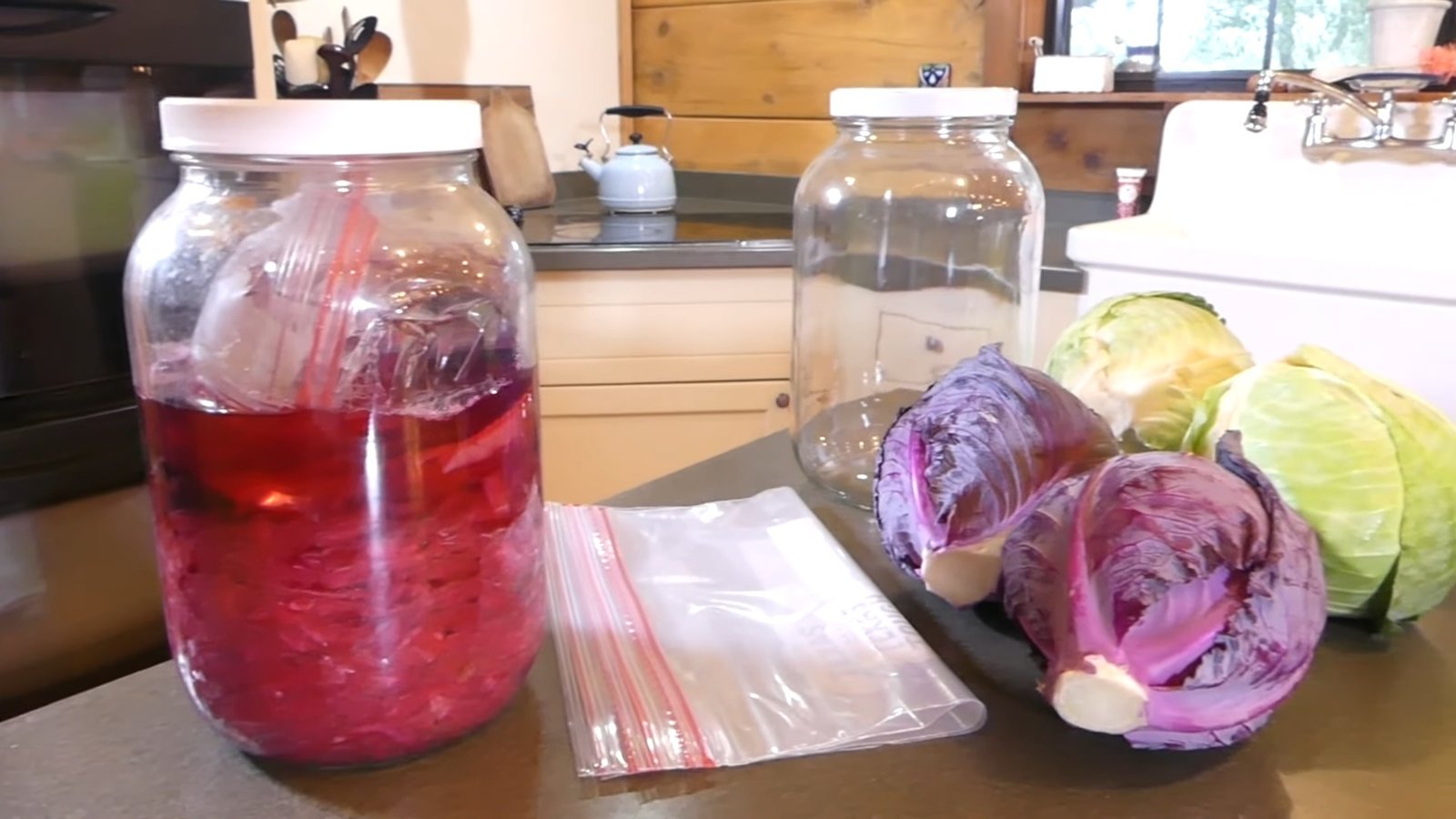
Are you ready to make your own sauerkraut but not sure where to start? This guide is here to give first-time fermenters the confidence and tools they need to create their first successful batch. Straight from the Daddykirbs kitchen, this step-by-step tutorial walks you through everything from choosing the right cabbage to properly fermenting your kraut for the best flavor and texture.
Why Make Your Own Sauerkraut?
Homemade sauerkraut is rich in probiotics, easy to make, and a great way to preserve cabbage. With just two ingredients—cabbage and salt—you can start a natural fermentation process that boosts gut health and adds a tangy, crunchy condiment to your pantry.
Choosing the Right Cabbage
Preferably, use cabbage fresh from your garden. If that’s not available, grocery store cabbage works fine—just follow these tips:
Look for tight, dense heads: Heavier heads usually have more moisture and are fresher.
Check for sheen: A fresh cabbage will have a slight natural gloss. Avoid dull, wilted leaves.
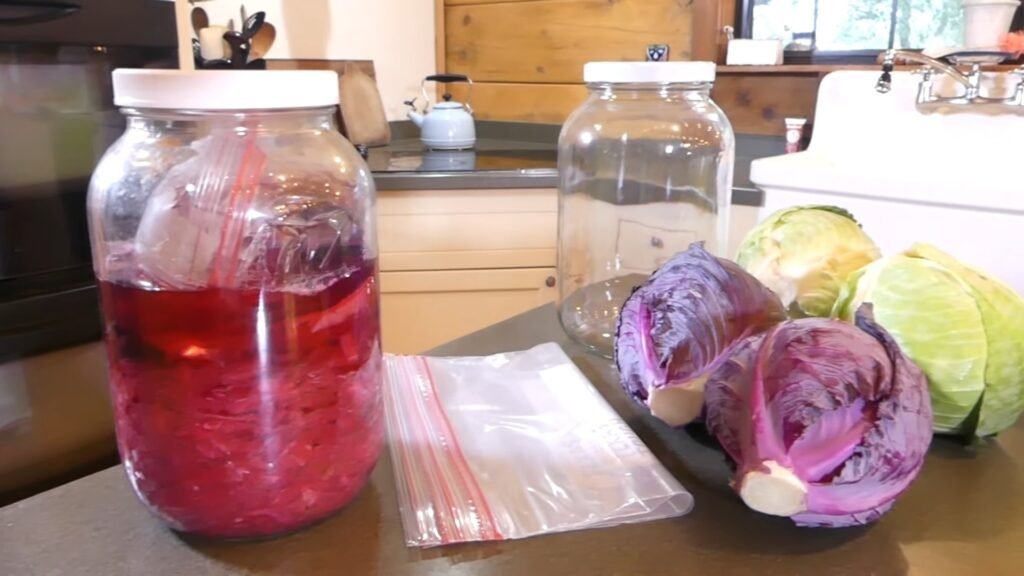
Mix red and green cabbage: This creates a beautiful pink color and adds flavor complexity.
Best Containers for Fermenting
You don’t need fancy crocks to get started. Here are simple container options:
Glass jars (like 1-gallon pickle jars or quart-sized mason jars) are ideal.
Avoid metal containers after fermentation begins.
Be cautious with glazed ceramic—ensure it’s lead-free.
Keep the lid loose to let CO₂ escape, or use a cloth and rubber band for airflow and bug protection.
The Mixing Bowl: What to Use
Before fermentation begins, it’s safe to use:
Stainless steel or plastic mixing bowls
Avoid aluminum or reactive metals
Glass is the best if you have one
At this stage, the cabbage is not acidic yet, so stainless steel is a safe choice.
The Salt: How Much and What Kind?
Use a non-iodized salt like:
Himalayan pink salt
Sea salt
Kosher salt
Avoid table salt with added iodine, which can disrupt fermentation.
Salt Ratio: Use 2–3% of the cabbage weight in salt.
Example:
8.3 lbs of cabbage × 16 = 132.8 oz
2% = 2.656 oz of salt, 3% = 3.984 oz of salt
About 1/3 to 1/2 cup of Himalayan salt, depending on your preference
Preparing the Cabbage
Wash and remove outer leaves: Save a few clean outer leaves for later.
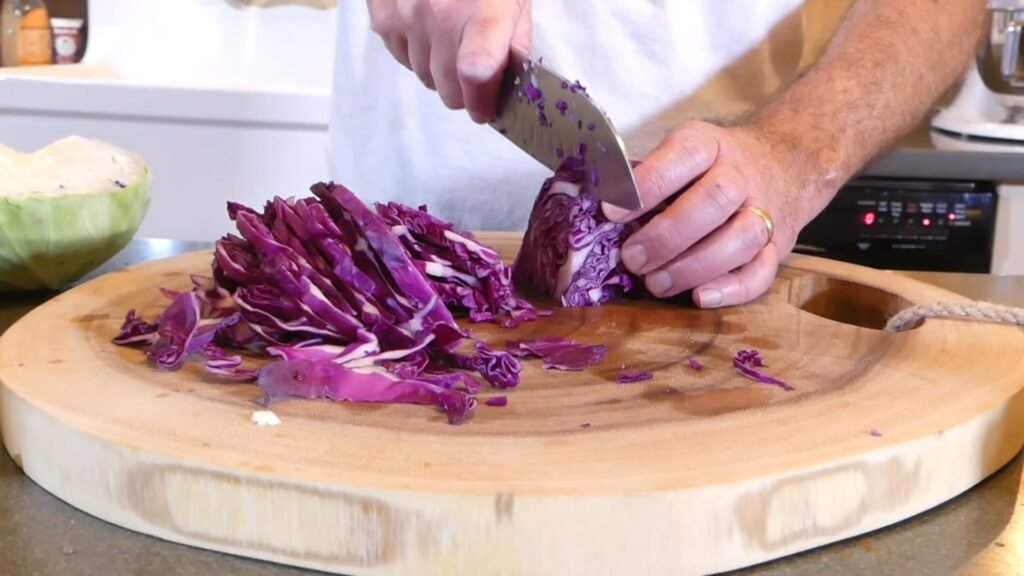
Cut the cabbage in half, remove the core, and slice into thin strips (less than ¼ inch thick).
Massage the cabbage with salt: Work it deeply until it starts releasing moisture and forming brine.
Tip: If your cabbage seems dry, let it sit for 45 minutes after salting and then massage again.
Packing the Jar
Layer cabbage and brine into your fermenting jar, pressing down tightly between layers.
Leave 2 inches of headspace at the top.
Use the reserved outer cabbage leaves as a “follower” to hold chopped cabbage below the brine.
Create a weight: Use a clean freezer bag filled with salted water as a DIY ferment weight. This helps keep the cabbage submerged and protects against contamination.
Final Steps
Add a loose lid or cover with a cloth.
Do not tighten the lid; gases from fermentation need to escape.
Place the jar on a tray to catch potential overflow.
How Long to Ferment?
7 days: Light, young kraut flavor
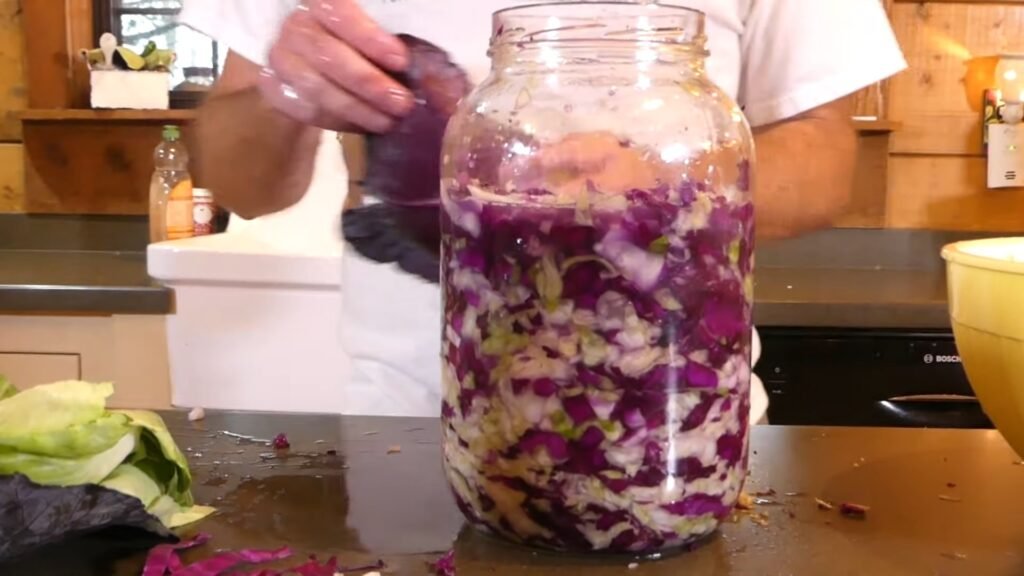
30 days: Balanced, full-bodied sauerkraut (recommended by Daddykirbs)
6+ months: Stronger, traditional flavor
Taste it along the way and decide what suits your palate best.
In Summary
To make traditional sauerkraut, all you need is cabbage, salt, and time. Follow this simple method to create a probiotic-rich, flavorful ferment at home. Don’t overcomplicate it—use the tools you have and trust the process. With this guide, even beginners can make delicious sauerkraut with confidence.
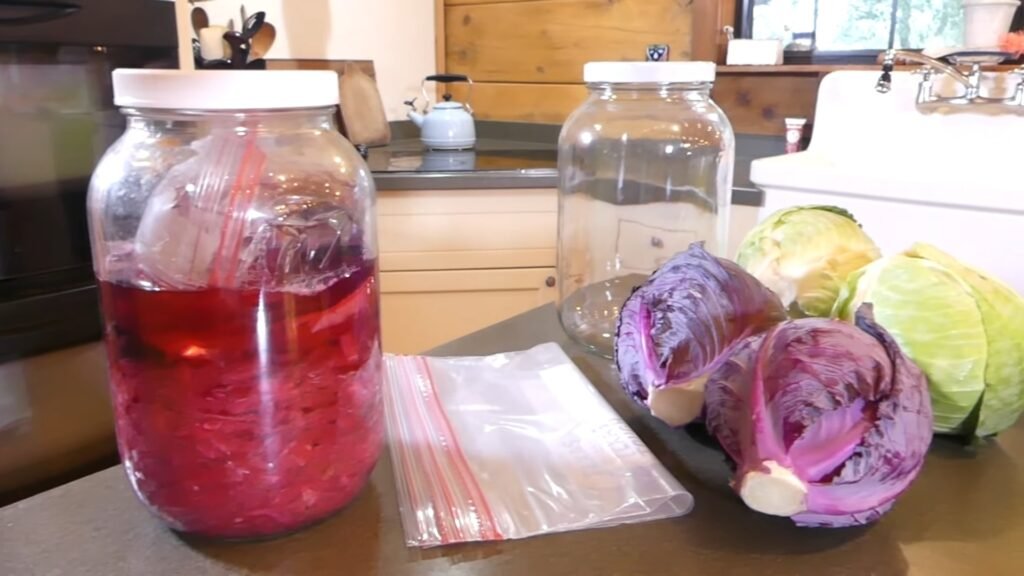
Are you ready to make your own sauerkraut but not sure where to start? This guide is here to give first-time fermenters the confidence and tools they need to create their first successful batch. Straight from the Daddykirbs kitchen, this step-by-step tutorial walks you through everything from choosing the right cabbage to properly fermenting your kraut for the best flavor and texture.
Why Make Your Own Sauerkraut?
Homemade sauerkraut is rich in probiotics, easy to make, and a great way to preserve cabbage. With just two ingredients—cabbage and salt—you can start a natural fermentation process that boosts gut health and adds a tangy, crunchy condiment to your pantry.
Choosing the Right Cabbage
Preferably, use cabbage fresh from your garden. If that’s not available, grocery store cabbage works fine—just follow these tips:
Look for tight, dense heads: Heavier heads usually have more moisture and are fresher.
Check for sheen: A fresh cabbage will have a slight natural gloss. Avoid dull, wilted leaves.

Mix red and green cabbage: This creates a beautiful pink color and adds flavor complexity.
Best Containers for Fermenting
You don’t need fancy crocks to get started. Here are simple container options:
Glass jars (like 1-gallon pickle jars or quart-sized mason jars) are ideal.
Avoid metal containers after fermentation begins.
Be cautious with glazed ceramic—ensure it’s lead-free.
Keep the lid loose to let CO₂ escape, or use a cloth and rubber band for airflow and bug protection.
The Mixing Bowl: What to Use
Before fermentation begins, it’s safe to use:
Stainless steel or plastic mixing bowls
Avoid aluminum or reactive metals
Glass is the best if you have one
At this stage, the cabbage is not acidic yet, so stainless steel is a safe choice.
The Salt: How Much and What Kind?
Use a non-iodized salt like:
Himalayan pink salt
Sea salt
Kosher salt
Avoid table salt with added iodine, which can disrupt fermentation.
Salt Ratio: Use 2–3% of the cabbage weight in salt.
Example:
8.3 lbs of cabbage × 16 = 132.8 oz
2% = 2.656 oz of salt, 3% = 3.984 oz of salt
About 1/3 to 1/2 cup of Himalayan salt, depending on your preference
Preparing the Cabbage
Wash and remove outer leaves: Save a few clean outer leaves for later.

Cut the cabbage in half, remove the core, and slice into thin strips (less than ¼ inch thick).
Massage the cabbage with salt: Work it deeply until it starts releasing moisture and forming brine.
Tip: If your cabbage seems dry, let it sit for 45 minutes after salting and then massage again.
Packing the Jar
Layer cabbage and brine into your fermenting jar, pressing down tightly between layers.
Leave 2 inches of headspace at the top.
Use the reserved outer cabbage leaves as a “follower” to hold chopped cabbage below the brine.
Create a weight: Use a clean freezer bag filled with salted water as a DIY ferment weight. This helps keep the cabbage submerged and protects against contamination.
Final Steps
Add a loose lid or cover with a cloth.
Do not tighten the lid; gases from fermentation need to escape.
Place the jar on a tray to catch potential overflow.
How Long to Ferment?
7 days: Light, young kraut flavor

30 days: Balanced, full-bodied sauerkraut (recommended by Daddykirbs)
6+ months: Stronger, traditional flavor
Taste it along the way and decide what suits your palate best.
In Summary
To make traditional sauerkraut, all you need is cabbage, salt, and time. Follow this simple method to create a probiotic-rich, flavorful ferment at home. Don’t overcomplicate it—use the tools you have and trust the process. With this guide, even beginners can make delicious sauerkraut with confidence.
